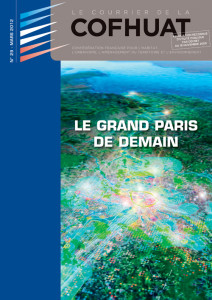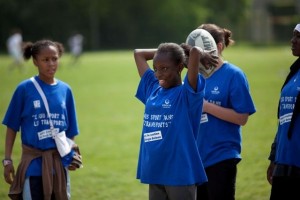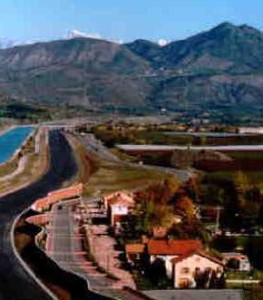Synthesis of the Cofhuat mail
This is an overview of the work undertaken on the synthesis of previously published mail numbers.
These are, once again, knowledge concerning all areas of development, the need to be able to search, view, in order to benefit all the.
For the most part, it takes the form of debates, involving representatives of all disciplines, who otherwise would never meet. Many topics have remained topical: one would like to prolong the debate, perform an update. This is particularly true for many examples of development cited, it would be interesting to know the evolution of recent years.
The book implemented brings together thirteen themes topics, where one must be able to find a set of words-key the object of research. Three presentations are chosen in this abstract, both for the approach as for the particularly representative aspect of the ongoing concerns of the development.
1 - The city's policy
2 - The future of housing
3 - The place of activities in the development,
4 - The place of equipment in development
5 - Urban planning resources
6 - Urban renewal
7 - Transport - planning and mobility
8 - The concept of sustainable development
9 - Suites of the Grenelle of the environment
10 - Broadband for all
11 - Policies affecting the mastery of energy
12 - The future of the Ile-de-France Region
13 - towards a new administrative structure
Three themes are presented, in short:
-the city's policy,
-the place of activities in the development,
-the mastery of energy policies.
THE CITY'S POLICY
-a set of knowledge
This is the opportunity of a new approach to the city, including districts, their evolution, but also of the people who participate in the life of the urban ensemble. Taking account of economic functions to appreciate its role in the development of the region that surrounds it. Other notions are discussed: sustainable development, mobility, energy balance, biodiversity in the heart of the city… A particular consideration for the different actors that contribute to its management.
 Enlargement of part of this presentation across Europe gives a new face and especially a new dimension in the quality of the examples cited.
Enlargement of part of this presentation across Europe gives a new face and especially a new dimension in the quality of the examples cited.
-innovative elements, the follow-up to
The city evolves, it renovates: what are all these faculties innovation, renewal, reclassification, which open a debate and go far beyond the good evolution of the management of a Local planning zones.
The desirable continuation interested several actions:
-show how a town in difficulty can manage its future, which immediately raises the current problem of medium-sized cities.
-illustrate by examples become a renovated Center, showing how to respect the integrity of a social group and preserve a world heritage,
-Open a discussion on possibilities of management, governance.
Examples were cited, relevant to several sites in the Paris region: those of La Courneuve, Massy – Antony, Montfermeil: it is desirable to follow their evolution. It is also the example of the city of Rennes, cited for the consistency of its management, which reflects on the quality of life of its inhabitants. The opening introduced on examples across Europe, should be pursued.
The idea to which all converge, it is this form of management which, on the basis of new knowledge, allows managers to learn more about the evolution of a city needs, and to assess its ability to innovate, to renew itself.
All these elements, through appropriate references, are found in different relevant E-mail:
12 - The policies of the city compared in Europe
19 - The city's policy - they undertake
23 - The policy of the city in France
THE PLACE OF ACTIVITIES IN DEVELOPMENT
-a set of knowledge
From the outset, emphasis is placed on the consolidation of activities within a territory, focusing on:
-their influence on the development of a region, which highlights the competitiveness poles, encouraged by DATAR since 2005,.
-the importance of creativity, innovation, which shows that in a region growth is linked to a 'knowledge economy ';
-the possibility to rely on research centres, training (the presence of a University).
This vision of the establishment of poles of activity, which goes beyond the image of the traditional zoning of urban planning documents, highlights groups benefiting from the same facilities, same equipment. This leads to the still recent notion of "clusters" with three situations: away, attached to a University, integrated into an urban ensemble with a strong development potential.
-innovative elements, the follow-up to
It's the innovative idea that introduced the illustrated COFHUAT by different examples:
-the Valley of Arve - industry and research, with 160 companies divided into 13 communes,
-the territory of Versailles - living in the city, with 30 companies,
-the Centre of excellence for the Alpes - Maritimes - health and technology
-the project of the 9 poles of development of the Grand Paris.
 This requires strategies to support with appropriate management bodies.
This requires strategies to support with appropriate management bodies.
Thus research is still open by returning to the sites presented, judging their evolution, highlighting the means implemented.
A debate remains open on the place and the Organization of activities within a territory:
-gather in clusters related to training, research, development of small centres in the urban space despite any zoning… An update is necessary.
All these elements, through appropriate references, are found in different relevant E-mail:
02 - Planning
16 - Poles of competitiveness and territorial development
20 - The construction of the Recovery Plan
27 - Poles of competitiveness - clusters - science parks
THE ENERGY POLICY
-a set of knowledge
In a first approach explained the concept of energy, referring to his mastery in the frame: its consumption with next provision to production in the infrequent case of a positive balance. This mastery of energy engages the responsibility of individuals, businesses, officials at the city level in the region.
Such a commitment responds to more exacting standards; These are those of the Agency of environment and control of energy (ADEME – RT 205-2012).
A report by the World Energy Council introduced the need to ensure the security of supply, "energy efficiency". The importance of the frame in the energy bill (43%) shows the effort that remains to be done. This concerns especially the habitat, with the importance of the social Park and its renewal.
Beyond this vast of recovery of the existing, as well as implementation of projects is an effort of ongoing management of all resources, energy that will be consumed by the city, to the use of water; This assumes a knowledge of balance and equilibrium conditions (use of the digital tool). Examples are listed with the very relevant image of the 'Smart and Green Economy'.
-innovative elements - the follow-up to
The debate involves the projection of this mastery across the city of tomorrow, which may initiate the review of the structure of the urban fabric of its plot, its density; cross-border missions of reflection and action are cited. Energy efficiency assumes a new governance, able at any time to steady state. Several elements deserve a lawsuit:
-the energy policies implemented depending on the climate, with the continuation of the experience of the Lauterbourg, from the example of a Chinese city for the efficiency of its management,
-the assessment of the occasions incurred on the social Park, returning to the exposed examples,
-the sequel to the cost comparison of realization of the frame with those of its management term,
-the optimal use of the resources of the environment – the fate of the "green PTZ.
All these elements, through appropriate references, are found in different relevant E-mail:
15 - Energy - its control in construction
30 - Energy efficiency and economic - goals 2020 - 2050
